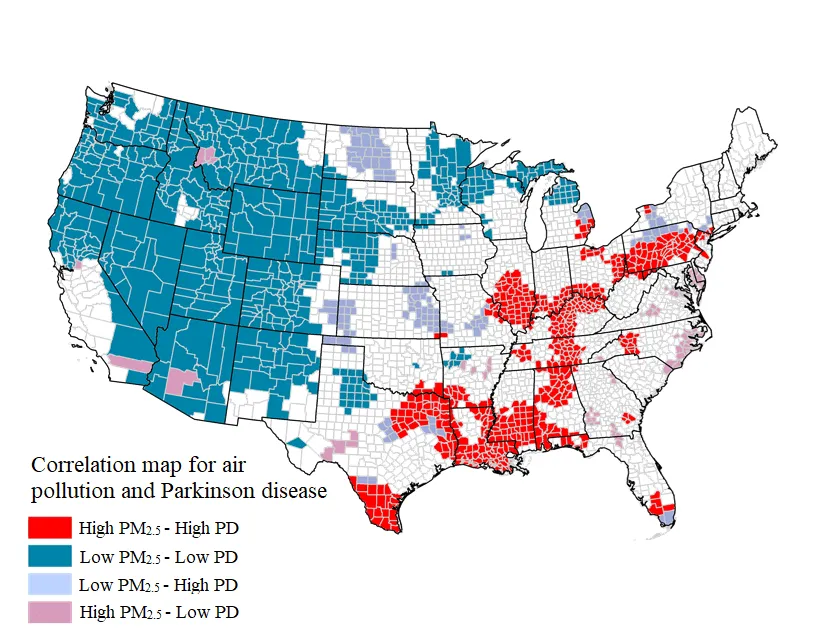Living in a city has its perks, but clean air isn’t always one of them. A recent study from Barrow Neurological Institute has shed light on a concerning link between air pollution and Parkinson’s disease.
Brittany Krzyzanowski, PhD, a researcher at Barrow, shared, “Using state-of-the-art geospatial analytical techniques, we were, for the first time, able to confirm a strong nationwide association between incident Parkinson’s disease and fine particulate matter in the U.S.” In simpler terms, the tiny particles in polluted air might be playing a role in the rise of Parkinson’s cases.
So, what’s the big deal with these tiny particles? Past research tells us that they can cause inflammation in the brain, which is a known trigger for Parkinson’s. These particles come from car exhausts, factories, and even natural events like forest fires.
Interestingly, not all regions face the same risk. Krzyzanowski pointed out, “Regional differences in Parkinson’s disease might reflect regional differences in the composition of the particulate matter. Some areas may have particulate matter containing more toxic components compared to other areas.” Places like the Mississippi-Ohio River Valley and parts of Texas, Kansas, and Michigan have been flagged as high-risk areas for Parkinson’s. On the flip side, if you’re in the western U.S., the risk seems to be a bit lower.
Similar Posts
Diving deeper, the study hints that the type of pollution might matter. The Mississippi-Ohio River Valley, with its busy roads and industrial vibe, might have pollution that’s especially harmful. Krzyzanowski explained, “This means that the pollution in these areas may contain more combustion particles from traffic and heavy metals from manufacturing which have been linked to cell death in the part of the brain involved in Parkinson’s disease,” says Krzyzanowski.
The study’s approach was thorough. Using a massive Medicare dataset, the team pinpointed around 90,000 Parkinson’s cases. By mapping these cases and comparing them to air pollution levels, the link became clear. And even after considering factors like age, gender, and smoking habits, the connection held strong.
Krzyzanowski believes this kind of research can offer valuable insights. She said,“Population-based geographic studies like this have the potential to reveal important insight into the role of environmental toxins in the development and progression of Parkinson’s, and these same methods can be applied to explore other neurological health outcomes as well.”
With support from major organizations like the U.S. Department of Defense and The Michael J. Fox Foundation, there’s hope that this study will inspire better air quality measures. After all, as Krzyzanowski put it, “Despite years of research trying to identify the environmental risk factors of Parkinson’s disease, most efforts have focused on exposure to pesticides. This study suggests that we should also be looking at air pollution as a contributor in the development of Parkinson’s disease.”
Our environment affects our health in ways we’re still discovering. As we learn more, it’s crucial to prioritize both our planet’s health and our own.


















